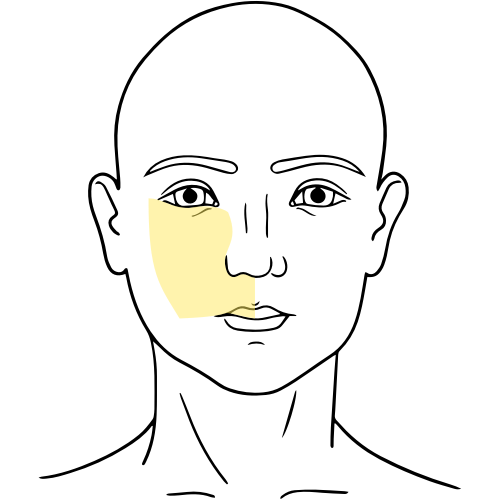Indications
- Trauma or need to perform painful procedure on areas innervated by infraorbital nerve
Contraindications
- Infection overlying injection site
- Allergy to local anesthetic
- Distortion of anatomical landmarks
Equipment
- 2-5cc of local anesthetic of choice
- Syringe
- Cleansing solution
- 1.5 inch small gauge needle (25 or greater)
Preparation
Positioning
Have patient sitting up or laying down
Technique
Intraoral
- Place patient in supine position or seated
- Apply anesthetic soaked q-tip to the mucosa opposite the upper second premolar (bicuspid) for 1 minute allowing for topical anesthesia
- Draw up 2-5cc of anesthetic into syringe
- Palpate the infraorbital foramen by having the patient look straight ahead and draw an imaginary line vertically from the pupil toward the inferior border of the infraorbital ridge, keep your finger on the foramen
- Retract the cheek and introduce the needle into the mucosa ~ 0.5cm from the buccal surface
- Advance the needle, keeping it parallel to the long axis of the bicuspid) until it is near the foramen (~1.5-2.5 cm)… do not advance too far as you may enter the orbit
- Aspirate, and if no blood, inject 4-5 cc of anesthetic slowly
Extraoral
- Place patient in supine position or seated
- Draw up 2-5cc of anesthetic into syringe (avoid epinephrine as you are very close to the facial artery while doing the block via this approach)
- Palpate the infraorbital foramen (step #4 above)
- Prep the overlying skin with betadine
- Insert the needle through the skin, subcutaneous tissue, and muscle
- Aspirate, if no blood, inject anesthetic slowly (the tissue will swell)
- Remove the needle and massage the area for 10-15 seconds
